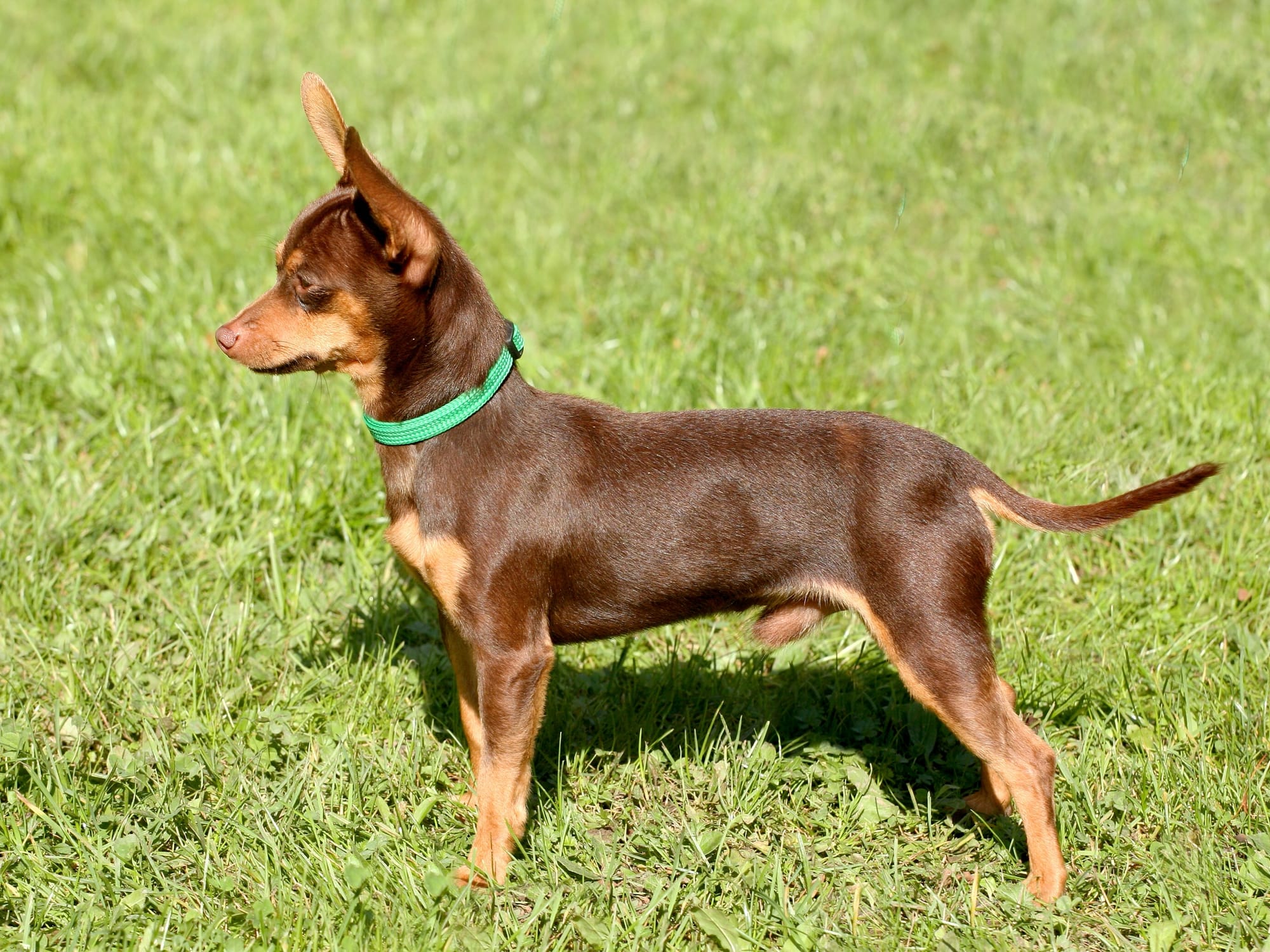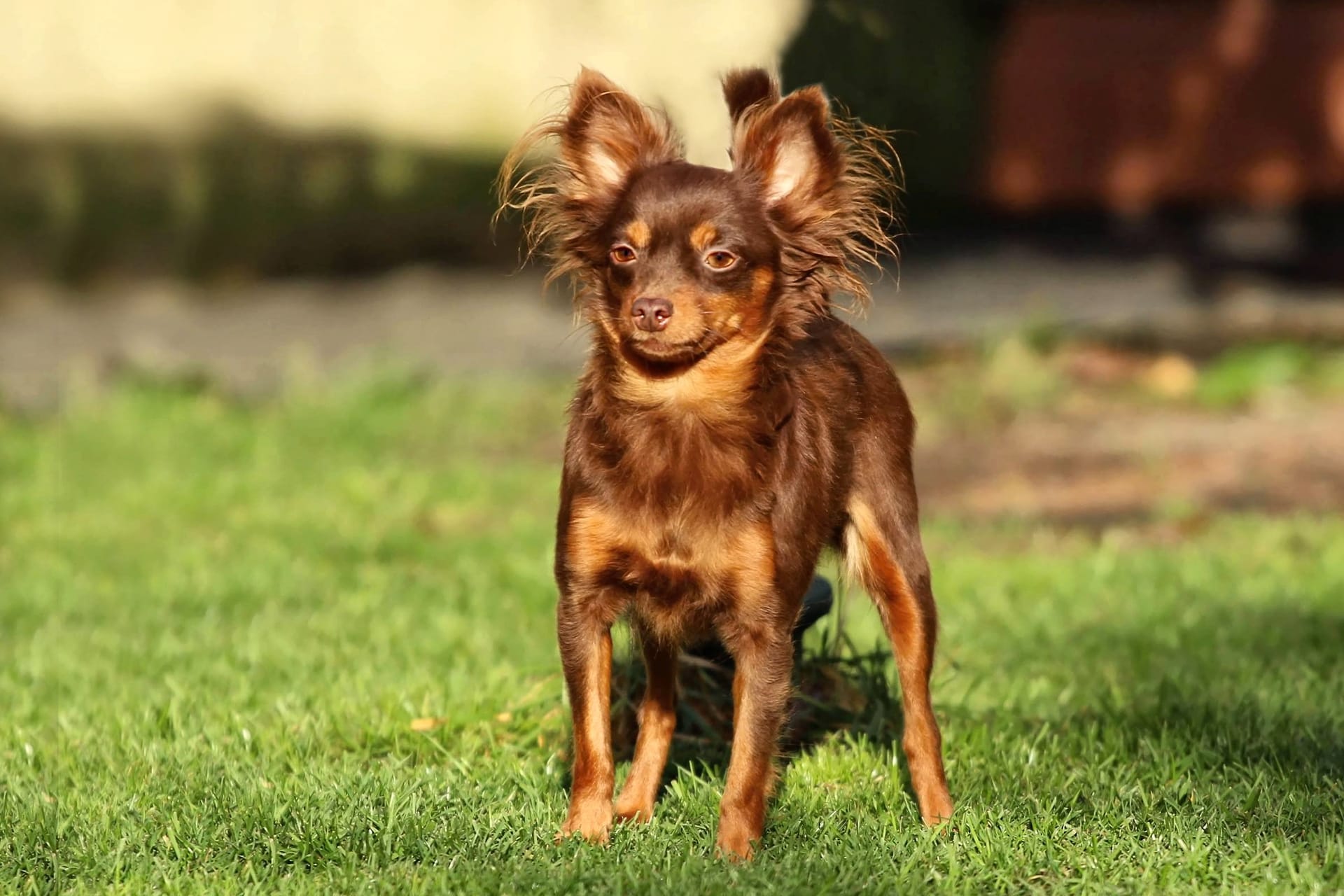Parisian ratters, known for their adeptness at controlling vermin populations, are a group of dog breeds that rose to prominence in the bustling urban landscape of Paris. Historically, these dogs were valued by shopkeepers, farmers, and even households for their hunting skills, especially in an era when rats and mice presented significant health risks and could cause serious damage to food supplies and property. The instinct and agility of these ratters made them indispensable companions in the maintenance of a clean and safe environment across the city.

Ratter dogs possess a distinctive set of characteristics: they are typically small to medium-sized with a keen sense of smell and a high level of intelligence. This combination of traits allows them to navigate the narrow and complex environments of Paris efficiently. They are persistent and determined in their task of chasing and capturing rodents, a job they perform with notable effectiveness.
In Paris, the presence of ratter dogs became especially critical before the advent of modern pest control methods. They could often be seen in the markets, stables, and docks of the French capital, patrolling their territories and keeping the vermin population at bay. Their role in historical Parisian society is not merely functional but also forms part of the cultural fabric of the city, associating these dogs with the traditional Parisian way of life.

Origins and History
Parisian ratters have a notable history as both a companion and a working class of dogs, deeply rooted in the urban landscape of France. Their development as a breed is intricately linked to the socio-economic conditions of historic France, especially in urban areas like Paris.
Roots in France
The origins of the Parisian Ratters, or Parisian rat catchers, trace back to France where they played a crucial role in controlling rat populations. These dogs were prized for their agility, intelligence, and determined nature in hunting and killing rodents. Early ratters in Paris were likely a mix of terrier breeds, encompassing Pinschers and Schnauzers, known for their tenacity in pest control.
Breed Development
The development of the Parisian Ratter as a distinct breed is intertwined with the history of several European breeds. Two key contributors to the Parisian Ratter lineage were the Pražský Krysařík from the Czech Republic and the French Bulldog. The latter evolved from the Toy Bulldogs, which were brought to France from England in the 1800s.
Over time, these Toy Bulldogs were crossed with local ratters, possibly including Mastiff breeds, giving rise to a distinct type known as the Bouledogue Francais or French Bulldog, which has retained its ratter heritage. These canines thrived in urban settings, their compact size making them ideal for navigating the cramped conditions of Parisian tenements.
Breed Characteristics
Parisian ratters, a distinctive breed known for their expertise in vermin control, possess unique physical traits tailored to their traditional role. Emphasis on agility and alertness defines their breed standard.
Physical Appearance
The Parisian ratter boasts a well-proportioned body, with a large head and expressive eyes that exude intelligence and curiosity. Their physical structure is designed for flexibility, allowing them to navigate tight spaces with ease.
- Large Head: Proportionate to their body, showcasing their alert nature.
- Eyes: Round and keen, reflecting a sharp, observant character.
Size and Weight
Their small size is deceptive of their robust energy and vitality.
- Size: Compact and small, facilitating their ratter duties.
- Weight: Ranges typically from 6 to 13 pounds, maintaining agility.
Coat and Colors
A dense, short coat protects them from the harshness of their working environment.
- Coat: Short and smooth, necessitating minimal grooming.
- Colors: They display a variety of colors, with certain shades being more prevalent:
- Red
- White
- Blue
- Black
Their coat coloring often features unique markings, which can be a combination of these colors. The breed standard does not favor any particular color combination, instead of prioritizing health and function.
Temperament and Behavior
Parisian ratters are known for their distinctive combination of spirited intelligence and affable nature. This section explores the specific personality characteristics, the breed's capacity for training, and their need for physical activity.
Personality Traits
Parisian ratters are affectionate and friendly, making excellent companion dogs. They are also alert and can act as effective watchdogs, signaling the presence of strangers with a keen sense of hearing. Their temperament is generally lively, which reflects in their playful nature. However, their strong prey drive necessitates early socialization to temper their instinctual behaviors.
Intelligence and Training
These dogs are noted for their high intelligence, which makes them responsive to training. Their capacity to learn obedience and perform tricks can be maximized through consistent and positive training methods. Due to their smart and attentive disposition, they excel in agility courses, which can be both a form of exercise and mental stimulation.
Exercise Requirements
Regular exercise is crucial for Parisian ratters, as it helps in managing potential stress and anxiety. They thrive on engaging activities like fetch, which caters to their need for movement and satisfies their instinctual prey drive. At least 30 minutes of active play or walk twice a day is recommended to maintain their physical and mental well-being.
Health and Care
Parisian ratters, a breed known for their agility and active lifestyle, require attentive care to maintain their health. Consistent grooming, a balanced diet, and awareness of common health issues are key to ensuring they live long, healthy lives.
Common Health Issues
Parisian ratters may be predisposed to Patellar Luxation, a condition where the kneecap dislocates out of its normal position. Regular veterinary check-ups are crucial for early detection and management of this condition. It is important for breeders to screen for this issue to sustain the health of the breed.
Grooming Needs
These dogs have grooming needs that include routine brushing to control shedding. Their coats, while not overly demanding, should be brushed weekly to remove loose hair and maintain skin health. Ear cleaning and nail trimming are also integral parts of their grooming regimen to prevent infections and overgrowth.
Diet and Nutrition
A balanced diet is imperative for the Parisian ratter's high energy levels and overall health. Nutrition should be tailored to their age, weight, and activity level with an emphasis on high-quality proteins and fats. They require a diet rich in nutrients to support their active lifestyle, which may include a mix of dry kibble and wet food. Portion control is crucial to avoid overfeeding, as obesity can exacerbate health issues like Patellar Luxation.

Parisian Ratters in Family Environments
Parisian Ratters, originally bred for rodent control, have grown to become valued companion dogs. Their size and temperament make them well-suited for various family settings.
Compatibility with Children
Parisian Ratters are typically gentle and loyal companions that can thrive in a family environment with supervision. Their small size and active nature make them excellent playmates for children who are old enough to interact properly with dogs. Training both the dog and children on how to treat each other with respect is crucial.
- Play Activities: Enjoy games like fetch; should be monitored to ensure safe interaction.
- Gentleness: Can be affectionate and gentle when socialized properly from a young age.
- Supervision: Necessary to ensure the dog's exuberance does not overwhelm young children.
Living with Other Pets
When properly introduced, Parisian Ratters usually coexist well with other pets due to their social nature. As with any dog, early socialization is key to a harmonious household.
- Cats: Can live peacefully with cats if introduced carefully and socialized early.
- Other Dogs: Their loyal disposition often extends to canine siblings, fostering a cooperative environment.
- Attention: Requires clear and consistent training to maintain a peaceful coexistence.
They are not typically a typical lap dog due to their active disposition, but they will often seek affection from their family members after play. Whether a Parisian Ratter will become an integrated member of a family with children or other pets relies heavily on proper socialization and training.
Training and Activities
Training Parisian ratters involves a mix of basic obedience and specialized activities to hone their instincts. Proper exercise and utilizing their high intelligence ensures they excel in their roles.
Basic Training
Parisian ratters begin with foundational obedience training. Consistency is key as these intelligent dogs learn commands such as sit, stay, and come. They respond well to positive reinforcement, and trainers may use treats or praise to reward the dogs' successes. Since Parisian ratters have an innate prey drive, it is crucial to develop recall skills early on.
- Exercise: These dogs require regular physical activity to stay fit and focused.
- Fetch: Integrates play with training, channeling their energy and reinforcing recall.
- Routine helps them understand expectations and establishes a bond between dog and owner.
Advanced Training
Advanced training for Parisian ratters builds on their natural abilities as vermin hunters. They learn specific behaviors for identifying and catching rats, leveraging their keen intelligence and agility.
- Prey Drive: Harnessing this instinct is crucial for rat hunting. Training includes simulated scenarios that mimic real-life environments where vermin might be present.
- Agility: An agility course can be beneficial for these dogs, offering both physical and mental exercise. They are taught to navigate obstacles, which sharpens their reflexes and coordination.
- Catching Rats: Safe, controlled settings are used to teach rat catch and release, ensuring the dog understands its role in hunting vermin without causing undue harm to the animal.
These activities not only prepare Parisian ratters for their traditional role as rat hunters but also provide them with the necessary physical and mental stimulation to thrive.
Breed Recognition and Clubs
Parisian ratters, known for their history in urban rodent control, have been acknowledged by several kennel clubs and breed-specific societies. They are appreciated for their tenacity, compact size, and agility, which make them excellent ratter dogs and companion animals.
Kennel Club Affiliations
The Kennel Club (KC), which is the UK's recognized authority for the registration of purebred dogs, lists specific criteria for breed recognition. While not all ratter breeds are recognized, those that meet the established breed standard may gain official status, allowing them to compete in club-sanctioned events.
The recognition process involves a Breed Standard that outlines the ideal characteristics specific to Parisian ratters. These criteria ensure that the dog not only excels in its ratter role but also conforms to health and temperament guidelines suitable for Toy Dog and Companion Dog classes.
Breed Recognition Status of Parisian Ratters in Major Kennel Clubs:
| Kennel Club | Recognition Status | Class |
|---|---|---|
| The Kennel Club (UK) | Under consideration | Toy/Companion |
| American Kennel Club (US) | Not officially recognized | N/A |
| Fédération Cynologique Internationale (FCI) | Recognized (as part of related breeds) | Companion |
Breed Clubs and Societies
Breed clubs and societies play a crucial role in the preservation and promotion of Parisian ratter breeds. They foster communities where enthusiasts and breeders can share knowledge and best practices. These societies often advocate for the breed's recognition by kennel clubs, and they maintain their own set of breed standards.

Notable Breed Clubs for Parisian Ratters:
- Parisian Ratter Society: A group dedicated to the promotion and preservation of the breed standard, with a focus on its historical role as a ratter.
- French Toy Dog Club: While not solely focused on Parisian ratters, this club encompasses a range of small dog breeds, advocating for their recognition and proper classification.
- International Companion and Toy Dog Breeders Association: An association that includes hybrid and established breeds, offering support and recognition for the Parisian ratter's qualities as a companion dog.
Choosing a Parisian Ratter
When selecting a Parisian Ratter, an intelligent and active small breed dog from France, one must consider both breeder selection and the opportunity for rescue and adoption. This well-regarded companion and efficient ratter requires careful consideration to ensure a good fit for both the pet and its future family.
Selecting a Breeder
When looking for a Parisian Ratter breeder, ensure they are reputable and prioritize the health and temperament of their dogs. Prospective Parisian Ratter owners should seek breeders who:
- Provide Health Clearances: Breeders should furnish verifiable health clearances for both parents of the puppy.
- Allow Visits: Good breeders typically welcome visits to their facilities to meet the puppies and their parents.
- How long have you been breeding Parisian Ratters?
- Can you provide references from previous buyers?
Breeder Checklist:
| Criteria | Detail |
|---|---|
| Experience | Select breeders with experience raising Parisian Ratters. |
| Health Testing | Look for comprehensive health testing of breeding dogs. |
| Environment | Check that puppies are raised in clean, enriched environments. |
| Socialization | Ensure puppies have been socialized from an early age. |
Rescue and Adoption
Adopting a Parisian Ratter can be a rewarding alternative to purchasing from a breeder. Shelters and rescue groups offer Parisian Ratters that need homes, often providing a cost-effective and compassionate choice.
Factors to Consider:
- Background: Rescue dogs may have less known history.
- Behavior: Spend time gauging the dog's behavior to ensure it is a good match for your lifestyle.
- Adoption Process: Understand the process and policies of the adoption agency.
Adoption Checklist:
| Criteria | Detail |
|---|---|
| Temperament | Observe the dog's temperament to ensure compatibility. |
| Health | Inquire about any known health issues and vaccinations. |
| Support | Check if post-adoption support resources are available. |
| Policies | Review the policies of the rescue or shelter thoroughly. |
Adopting a Parisian Ratter offers a chance to give a home to a pet in need while gaining a loyal and affectionate hug-loving companion.
Frequently Asked Questions
This section addresses common inquiries regarding the origins, evolution, and characteristics of the French Bulldog, a breed once associated with ratter duties in Paris.

- What two breeds were originally crossbred to create the French Bulldog?
- The French Bulldog was originally bred from a cross between English Toy Bulldogs imported to France and local ratter breeds in the 1800s.
- How has the appearance of French Bulldogs changed over the past 100 years?
- Their appearance has evolved to have the distinctive bat ears, a shorter snout, and a more robust and muscular body compared to the longer, leaner look they had a century ago.
- What is the history and origin of the French Bulldog breed?
- The French Bulldog has its origins in Paris, France, during the mid-19th century. Initially bred by lace makers and later by society women, they served as companions and miniature ratters, turning into a fashionable breed by the late 19th century.
- Are French Bulldogs related to any ratter breeds?
- Yes, they are related to ratter breeds as their ancestors included small bulldogs that were used for ratting activities.
- Why do French Bulldogs typically have a high price tag?
- French Bulldogs often have a high price tag due to their popularity, the cost of breeding (often requiring artificial insemination and C-sections for delivery), and health care related to their specific physical attributes.
- Which dog breed is often confused with French Bulldogs due to their similar appearance?
- The Boston Terrier is often confused with French Bulldogs due to their similar size, build, and wide-set round eyes, although Boston Terriers have a longer muzzle and are generally taller.




